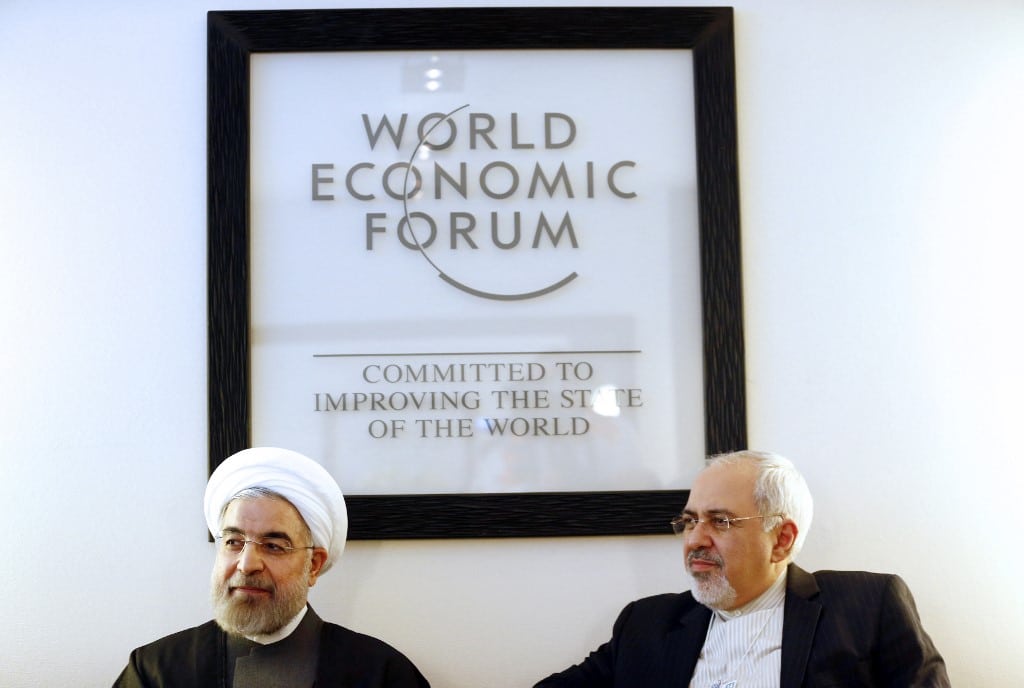Rouhani’s reform program aimed to expand personal freedoms, mend ties with the West, and revive Iran's struggling economy.

President-elect Hassan Rouhani’s joy at his landslide election victory soon gave way to serious concerns and unease last year, as he found himself in the midst of the chaotic situation he was mandated to tackle.
The moderate cleric had a reform program designed, on the one hand, to expand personal freedoms and repair the long strained diplomatic ties with the West and, on the other hand, to fix the critically damaged economy, which he later described as “wreckage and debris” caused by tough Western sanctions against Iran’s nuclear program and mismanagement by the previous administration.
According to many experts, Rouhani’s assessment of the economy was no exaggeration, given the then 45% point-to-point inflation rate and negative 5.8% economic growth, which have since improved to about 15% and minus 2.2%, respectively in 2013. The International Monetary Fund predicted that the economy would post a 1.5% growth in 2014, after two years of contraction.
Meanwhile, officials are hoping next year to return an economic boom to a country gripped by recession. Real improvement will come only if the diplomats can hammer out a permanent nuclear deal in the coming months to replace the current interim arrangement, leading to full relief from the sanctions. The government, however, suggests, in an economic package it has recently released, that it would not rely on hopes and promises of sanctions relief when dealing with the economic situation.
A historic phone call between the presidents of Iran and the United States in September 2013 and a visit to Iran by the Italian foreign minister, Emma Bonino, in December paved the way for her Swedish, Polish, Belgian, Greek, Latvian, Spanish, and Austrian counterparts to pay separate visits, each traveling with large business delegations with the intention of assessing the conditions for reengagement. Hopes were raised even further in November, when diplomats from Iran and the five permanent members of the UN Security Council clinched an interim nuclear deal in Geneva to curb the Iranian nuclear program in return for partial sanctions relief.
Despite this all, substantial challenges remain, and consumers have seen few tangible changes since the moderate cleric took office last August. In the local market, the prices continue to rise, but at a much slower pace in line with the inflation rate.
The cost of living is still high for many, especially 15 million people who, according to member of parliament Mousa Servati, are living below the poverty line. “The situation hasn’t improved at all and has even worsened,” said Mahtab, an English translator in Tehran, comparing the present situation with Ahmadinejad’s first years in office, when growth hit 8%, thanks to almost $750 billion in oil revenues earned before the sanctions. “There are many things we can’t afford to buy.”
Among the headaches for Rouhani’s cash-strapped government is the implementation of the second phase of the subsidy reform plan, a program of the Ahmadinejad era that was established to cut subsidies on energy and food in an attempt to let prices be determined by the free market and to reduce consumption and save money for an overhaul of industry, transportation, farming, public health, and social services.
In practice, Ahmadinejad’s reform plan drove the already high inflation rate much higher, forcing the government to distribute monthly $15 cash handouts to all 77 million people.
Iran’s economy minister Tayeb-Nia said last week that the government has identified 10 million of the well-off to be removed from the list of recipients, because an earlier government appeal to the public to forgo the handouts was responded to by only about 2.4 million people.
In a rare expression of regret by an Iranian official, President Rouhani took responsibility in February for problems in the distribution of commodity baskets to the poor following the death of three people standing in long lines in freezing temperatures. The distribution of the food ration, which included eggs, cooking oil, chicken, rice, and cheese, was intended to lower the inflation rate.
Iran’s trade and industry minister, Mohammad Reza Nemat Zadeh, said that automobile production in the first quarter of the year was double that of the same period last year, citing sanctions relief and improvement in policies as the reasons.
The currency market has stabilized, with few signs of the shock it suffered in the 2012 aftermath of implementation of several rounds of Western sanctions, when the Iranian rial lost nearly half its value against the US dollar. The dollar was trading at 40,000 rials during that period but now goes for 30,000 rials.
The oil ministry aims to double petroleum output to 5.7 million barrels per day by 2019. This would be a huge boost for the economy, if it were realized. The country’s oil exports have been slashed by almost half since 2012, to about 1.2 million bpd of crude exports, after tough US and EU sanctions targeting the oil and banking sector came into full effect.
The tourism sector has also been affected by the new conditions. The head of the tourism organization said the sector had enjoyed a record 200% increase in foreign tourist arrivals in the first quarter of the Iranian calendar year. Almost all hotels in the big cities (Tehran, Tabriz, and Isfahan) have been fully booked until the end of the year, according to officials. “The country should host 20 million tourists in the next 11 years,” said Iran’s vice president Masoud Soltani-Far.


